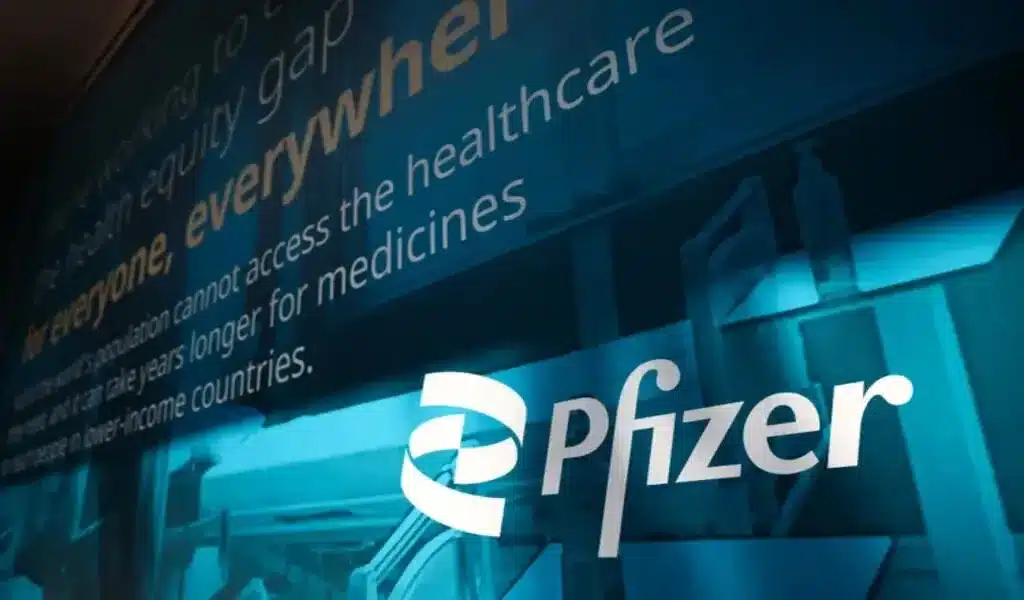Health
The Different Types of ECG Tests in Singapore: Which One is the Best for You?

The Electrocardiogram, commonly known as an ECG test, is a non-invasive medical test that records the electrical activity of the heart. It provides valuable information about the heart’s rhythm, structure, and overall function. By analyzing the patterns and waves produced by the heart’s electrical signals, healthcare professionals can diagnose various heart conditions and monitor the effectiveness of treatments.
Being aware of the different types of ECG test is crucial in comprehending the specific purposes and capabilities of each variation, and this article contains all the information you need including the ECG test price in Singapore (https://cadenceheart.sg/heart-screening-package/)!
What happens during an ECG?
During an ECG, a healthcare professional attaches small, adhesive electrodes to specific locations on the patient’s chest, arms, and legs. These electrodes are connected to a machine that records the electrical signals produced by the heart. The test is painless (barely uncomfortable, even) and typically takes only a few minutes to complete. The recorded electrical activity is then printed on graph paper or displayed on a monitor, allowing healthcare providers to analyze the data and identify any abnormalities.
Importance of ECG in diagnosing heart conditions
ECG plays a vital role in diagnosing heart conditions by providing detailed information about the heart’s electrical activity. It helps identify irregular heart rhythms (arrhythmias), heart attacks, blocked arteries, and other abnormalities. By detecting these issues early on, the doctor can initiate prompt treatment, which can significantly reduce the risk of complications. Additionally, ECG is often performed as a routine test during physical examinations, enabling doctors to monitor the heart health of individuals with pre-existing heart conditions.
Common types of ECG
- 12-Lead ECG: The 12-Lead ECG is one of the most common types of ECG performed. It utilizes ten electrodes placed on the patient’s chest, arms, and legs, allowing for the recording of electrical activity from twelve different angles. Each lead provides unique information about the heart’s electrical function and aids in the diagnosis of various heart conditions. This type of ECG is often used in emergency departments, clinics, and hospitals to assess patients with symptoms such as chest pain, shortness of breath, or palpitations.
- Stress ECG: A Stress ECG, also known as an exercise or treadmill ECG, measures the heart’s electrical activity during physical exertion. The patient is usually asked to walk or run on a treadmill or pedal a stationary bicycle while the ECG is being recorded. This type of ECG helps evaluate the heart’s response to exercise and can detect any abnormalities that may not be apparent at rest. Stress ECGs are particularly useful in diagnosing coronary artery disease, assessing exercise tolerance, and determining appropriate exercise levels for patients with heart conditions.
- Holter Monitor: The Holter Monitor is a portable device that records the heart’s electrical activity persistently for 24 to 48 hours or longer. It consists of electrodes attached to the patient’s chest, which are connected to a small recording device worn around the waist or carried in a pocket. The Holter Monitor is used to capture any irregularities in the heart’s electrical patterns that may occur sporadically throughout the day. This type of ECG is especially beneficial in diagnosing arrhythmias, evaluating the effectiveness of medication, and monitoring the heart’s response to specific activities.
- Event Monitor: Similar to the Holter Monitor, the Event Monitor is a portable device that records the heart’s electrical activity. However, it is typically worn for a longer duration, which can range from a few days to several weeks. The Event Monitor is activated by the patient whenever they experience symptoms such as palpitations or dizziness. Once activated, the device records the heart’s electrical signals for a specific period, capturing any abnormalities that may be responsible for the symptoms. This type of ECG is particularly useful in diagnosing infrequent or intermittent arrhythmias.
Reasons for getting an ECG
There are several good reasons why you should undergo an ECG. Firstly, if you are experiencing symptoms such as chest pain, shortness of breath, dizziness, or palpitations, you may be advised to have an ECG to assess your heart’s electrical activity. Secondly, those with a family history of heart disease or known risk factors may be recommended to have regular ECGs as a preventive measure. Additionally, individuals with pre-existing heart conditions may undergo ECGs to monitor the effectiveness of their treatment or detect any new abnormalities.
Who should consider getting an ECG?
ECGs are recommended for people with specific risk factors or symptoms. Those who should consider getting an ECG include individuals with a family history of heart disease, high blood pressure, high cholesterol levels, diabetes, smoking habits, obesity, or a sedentary lifestyle. Furthermore, individuals who experience unexplained chest pain, shortness of breath, irregular heartbeats, or fainting episodes should also undergo an ECG.
How to prepare for an ECG
Preparing for an ECG is relatively simple. To ensure accurate results, you should avoid applying lotions, oils, or powders to their chest, as these substances can interfere with the electrode adhesion. It is also advisable to wear loose-fitting clothing that allows easy access to the chest area. During the test, you may be asked to lie still and avoid talking or moving, as movement can disrupt the electrical signals. At this point, it is necessary to follow any specific instructions provided by the healthcare professional conducting the ECG to ensure optimal results.
ECG test price in Singapore
The average price of an ECG test in Singapore can vary depending on the healthcare provider and the specific clinic. Most ECGs can range from around $60 to $80. Some clinics and healthcare facilities also offer heart screening packages, which include an ECG test. These packages can cost anywhere between $380 and $1600. For the most accurate and up-to-date pricing information, it is always recommended to check with the healthcare provider or clinic directly.
Conclusion on ECG Test Singapore
In conclusion, ECGs play a vital role in diagnosing heart conditions. Each type of ECG serves a unique purpose in capturing and analyzing the heart’s electrical patterns – whether it is evaluating heart function during exercise or monitoring intermittent abnormalities, ECGs aid in the early detection and management of various heart conditions. By considering the reasons to get an ECG and preparing appropriately for the test, individuals can actively contribute to maintaining their heart health and overall well-being.
If you have any concerns about your heart health or are experiencing any symptoms related to heart conditions, contact the Cadence Heart Center and consider getting an ECG to ensure timely diagnosis and appropriate treatment.

Health
Report Causes Pfizer Stock to Climb Approximately $1 Billion Acquired by Starboard

(VOR News) – According to a rumor that activist investor Pfizer Starboard Value has taken a holding in the struggling pharmaceutical business that is expected to be worth around one billion dollars, the stock of Pfizer (PFE) is on the increase in premarket trading on Monday.
This comes after the report was made public. The report was made available to the general public following this. Starboard Value was successful in moving forward with the acquisition of the position.
Starboard is said to have approached Ian Read, a former chief executive officer of Pfizer, and Frank D’Amelio, a former chief financial officer, in order to seek assistance with its goals of boosting the performance of the company, according to the Wall Street Journal. Read and D’Amelio are both former Pfizer executives.
The purpose of this is to facilitate the accomplishment of its objectives, which include enhancing the overall performance of the firm.
In their previous jobs, D’Amelio and Read were chief financial officers.
It is stated in the report that the hedge fund is of the opinion that Pfizer, which is currently being managed by Albert Bourla, who succeeded Read as Chief Executive Officer (CEO) in 2019, does not demonstrate the same level of mergers and acquisitions (M&A) discipline that Read did. Bourla took over for Read in 2019. Read was succeeded by Bourla in the year 2019.
Pfizer, a multinational pharmaceutical conglomerate, has made substantial investments in the acquisition of more companies that are involved in the research and development of cancer medicines.
These businesses have been acquired for billions of dollars. The biotechnology company Seagen, which was acquired by Pfizer in the previous year for a price of $43 billion, is included in this category. One of the businesses that can be classified as belonging to this category is Seagen.
In spite of the fact that the S&P 500 Index experienced a 21% increase in 2024.
No major trading occurred in Pfizer stock that year.
Due to the fact that the demand for Pfizer’s COVID-19 vaccines fell after the firm reached its pandemic peak in 2021, the share price of the corporation has decreased by over fifty percent since that time.
This drop has occurred ever since the company’s shares reached their maximum peak, which was during the time that this decline occurred. Not only have they not changed at all, but they have also remained essentially stable. This is in contrast to the S&P 500, which has gained 21% since the beginning of this year.
Recently, the corporation was forced to take a hit when it decided to recall all of the sickle cell illness medications that it had distributed all over the world.
Fears that the prescription could lead patients to experience severe agony and possibly even death were the impetus for the decision to recall the product. In spite of the fact that Pfizer’s stock is increasing by almost three percent as a result of the news that followed the company’s decision, this is the circumstance that has come about.
SOURCE: IPN
SEE ALSO:
New Study Reveals Drinking Soda Pop Increases the Risk of Stroke
The Mpox Vaccine’s Protection Decreases Within a Year; Booster Requirements
Health
New Study Reveals Drinking Soda Pop Increases the Risk of Stroke

A recent report from global research indicates that excessive consumption of coffee or soda pop is associated with an increased risk of stroke, although the intake of black and green tea is correlated with a reduced risk. Excessive consumption of soda pop or coffee warrants caution!
Recent research indicates that it may substantially elevate the risk of stroke.
Consuming four cups of coffee daily elevates the risk of stroke, according to studies, although ingesting 3-4 cups of black or green tea daily typically offers protection against stroke. Additionally, consume more coffee; it may reduce your risk of mortality.
Recent findings from global research studies co-led by the University of Galway and McMaster University, alongside an international consortium of stroke researchers, indicate that soda, encompassing both sugar-sweetened and artificially sweetened variants such as diet or zero sugar, is associated with a 22 percent heightened risk of stroke. The risk escalated significantly with the consumption of two or more of these beverages daily.
Stroke Risk Fizzy Drinks and Soda Pop
The correlation between fizzy drinks consumption and stroke risk was most pronounced in Europe, the Middle East, Africa, and South America. Women exhibit the most elevated risk of stroke from bleeding (intracranial hemorrhage) associated with fruit juice beverages. Consuming over 7 cups of water daily diminishes the likelihood of stroke due to a clot.
Researchers observed that numerous items advertised as fruit juice are derived from concentrates and have added sugars and preservatives, potentially negating the advantages often associated with fresh fruit and instead elevating stroke risk.
Fruit juice beverages were associated with a 37 percent heightened risk of stroke resulting from bleeding (intracranial hemorrhage). Consuming two of these beverages daily increases the risk thrice.
Consuming over four cups of coffee daily elevates the risk of stroke by 37 percent, although lower consumption levels do not correlate with stroke risk. Conversely, tea consumption was associated with an 18-20 percent reduction in stroke risk. Additionally, consuming 3-4 cups daily of black tea, such as Breakfast and Earl Grey varieties, excluding green and herbal teas, was associated with a 29 percent reduced risk of stroke.
Consuming 3-4 cups of green tea daily was associated with a 27 percent reduction in stroke risk. Notably, the addition of milk may diminish or inhibit the advantageous effects of antioxidants present in tea. The lower risk of stroke associated with tea consumption was negated for individuals who added milk.
Disclaimer: This article is intended solely for informational reasons and should not be considered a replacement for professional medical counsel. Consistently consult your physician regarding any inquiries pertaining to a medical problem.
Related News:
Starbucks Faces Sales Decline Amid Price Fatigue and Rising Competition
Starbucks Faces Sales Decline Amid Price Fatigue and Rising Competition
Health
Following a Diagnosis of Breast Cancer, What Else Should You Know?

(VOR News) – Even though breast cancer affects one in eight American women, receiving a diagnosis can make a woman feel isolated.
Experts in breast cancer from the American College of Physicians (ACS) advise patients on how to manage their disease so that they may better cope with this awful information.
First, the kind and stage of breast cancer dictates the course of your care.
In addition to immunotherapy and chemotherapy, there are various surgical options available for the treatment of breast cancer.
Women of African descent are disproportionately affected by triple-negative breast cancer, an extremely aggressive form of the disease that has never proven easy to treat.
According to the American Cancer Society, pembrolizumab (Keytruda), an immunotherapy, has been shown to be helpful when combined with chemotherapy and is currently the recommended course of treatment for certain combinations of triple-negative breast cancer.
In her presentation, Dr. Katharine Yao said, “It’s really important that the patient and physician discuss the patient’s preferences and values when deciding what type of treatment to pursue and that they have an honest, individualized discussion with their care team.”
She is currently responsible for developing breast cancer treatment recommendations for more than 575 hospitals and institutions nationwide in her role as chair of the American College of Surgeons’ National Accreditation Program for Breast Institutions (NAPBC).
Yao, vice chair of research at Endeavor Health NorthShore Hospitals in New York, pointed out that each decision made about a patient’s treatment plan should take her preferences and diagnosis into consideration.
She ought to think about whether she would prefer a mastectomy—a surgical procedure that involves removing the entire breast with or without reconstruction—or a lumpectomy, which involves a surgical procedure that spares part of the breast tissue.
She stated that “the breast cancer you have may be very different from the breast cancer you hear about in your neighbor, colleague, or friend” in a press release issued by the American Cancer Society (ACS).
“Consider that while discussing breast cancer with others.”
Throughout your journey, it is critical that you look after your emotional health because having breast cancer may have a detrimental impact on your mental health.
“Getting a cancer diagnosis does not mean that everything in your life stops to be normal.” Director of the Fellowship in the Diseases of the Breast program at the Winthrop P. Rockefeller Cancer Institute at the University of Arkansas and state head of the American Cancer Society Commission on Cancer for Arkansas, Dr. Daniela Ochoa She thinks adding the burden of a cancer diagnosis and treatment to all the other pressures in life may be taxing.
“Managing stress and emotional health is vital component of a treatment plan.”
Ochoa recommends clinically trained psychologists and social workers who have assisted people in coping with cancer to anyone receiving treatment. Learning coping techniques might also be facilitated by joining cancer support groups or cancer wellness initiatives.
Breast cancer specialists say your care team is crucial.
The American Cancer Society (ACS) defines comprehensive care as having support at every stage of the procedure from surgeons, oncologists, patient navigators, nurses, social workers, psychologists, and other specialists.
After receiving a breast cancer diagnosis, women should see a surgeon or medical oncologist to explore their options; nevertheless, treatment shouldn’t be discontinued after just one appointment or after surgery is over.
Additionally, you can ask trustworthy friends or family members to accompany you to appointments and aid you with research or notes. They could serve as a network of support for you.
Yao stated in his talk that “one of the most important things is that patients should search out a team they have confidence in, that they trust will have their back when they need it, and a team they feel they can get access to and that will help them when they are in need.”
SOURCE: MP
SEE ALSO:
The Mpox Vaccine’s Protection Decreases Within a Year; Booster Requirements
COVID was a Paradigm Shift in Health Policymaking, Says Commissioner Stella Kyriakides.
Rwanda Reports 8 Deaths Linked To Ebola-Like Marburg Virus Days After It Declared An Outbreak
-

 News3 years ago
News3 years agoLet’s Know About Ultra High Net Worth Individual
-
Entertainment2 years ago
Mabelle Prior: The Voice of Hope, Resilience, and Diversity Inspiring Generations
-

 Health4 years ago
Health4 years agoHow Much Ivermectin Should You Take?
-

 Tech2 years ago
Tech2 years agoTop Forex Brokers of 2023: Reviews and Analysis for Successful Trading
-

 Lifestyles3 years ago
Lifestyles3 years agoAries Soulmate Signs
-

 Movies2 years ago
Movies2 years agoWhat Should I Do If Disney Plus Keeps Logging Me Out of TV?
-

 Health3 years ago
Health3 years agoCan I Buy Ivermectin Without A Prescription in the USA?
-

 Learning3 years ago
Learning3 years agoVirtual Numbers: What Are They For?